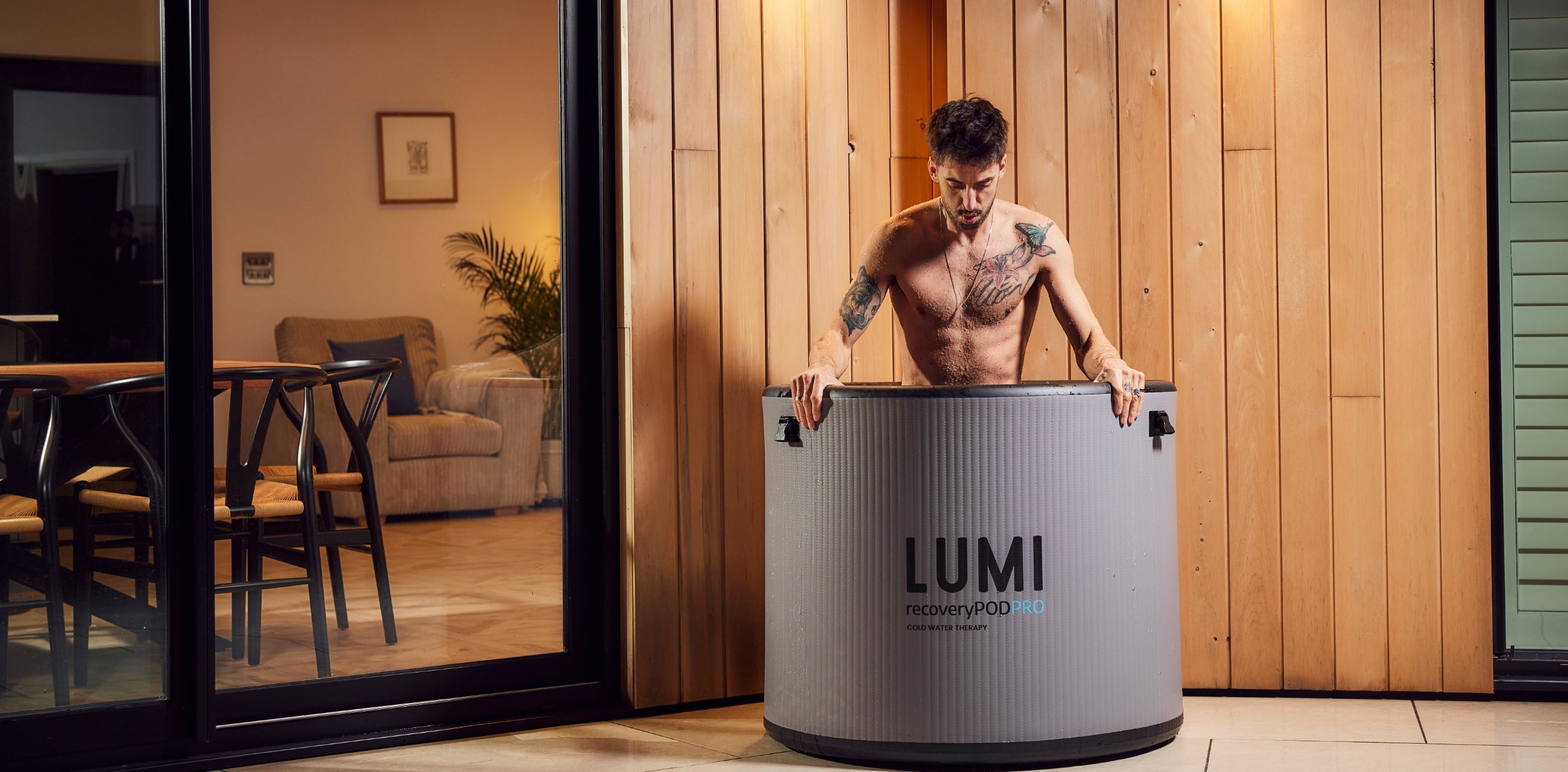In recent years, cold water swimming has gained popularity as a form of therapy for both mind and body. From boosting mood to enhancing resilience, the benefits of cold water immersion go far beyond the initial shock of the chill. In this article, we'll dive deep into the science behind why cold water swimming makes you feel good and explore its potential impact on mental health and overall well-being.
Understanding the Cold Water Effect:
Let's start with the basics: what exactly happens to your body when you take a dip in cold water? The initial response is a physiological shock known as the cold water effect. When your body is exposed to cold water, several key reactions occur. Firstly, your heart rate increases and your blood vessels constrict in an attempt to conserve heat. This sudden change triggers the release of stress hormones like adrenaline and cortisol, preparing your body for the cold shock.
However, as you acclimate to the cold water, something remarkable happens. Your body begins to adapt to the chilly environment, and a series of physiological responses kick in to help you cope with the cold. One of these responses involves the release of endorphins – our body's natural painkillers – which can induce feelings of euphoria and well-being. Additionally, cold water immersion stimulates the production of norepinephrine, a neurotransmitter associated with improved mood and focus.
The Mental Health Benefits of Cold Water Swimming:
Now that we've covered the science behind the cold water effect, let's explore how these physiological changes translate into mental health benefits. One of the most notable effects of cold water swimming is its ability to alleviate symptoms of depression and anxiety. Research has shown that the release of endorphins and norepinephrine during cold water immersion can have a profound impact on mood regulation.
Furthermore, the act of immersing oneself in cold water requires a significant amount of mental fortitude and resilience. Overcoming the initial shock of the cold and staying in the water requires focus, determination, and a willingness to embrace discomfort – all of which are valuable skills for managing stress and building emotional resilience.
In addition to its direct effects on mood and resilience, cold water swimming also provides an opportunity for mindfulness and reflection. The sensory experience of being immersed in cold water can be incredibly grounding, helping individuals to disconnect from the stresses of everyday life and focus on the present moment. Many cold water swimmers describe a sense of clarity and calmness that washes over them as they float.
Physical Benefits of Cold Water Swimming:
Beyond its mental health benefits, cold water swimming also offers a range of physical advantages. The cold shock response triggers a surge in metabolic activity, increasing calorie expenditure and potentially aiding in weight loss. Additionally, the vasoconstriction induced by cold water immersion can improve circulation and reduce inflammation, leading to faster recovery times after exercise.
Cold water swimming has also been linked to improvements in cardiovascular health, with regular immersion in cold water shown to strengthen the heart and improve circulation. The cold water stimulates the production of brown adipose tissue – a type of fat that generates heat – which can help regulate body temperature and enhance thermogenesis.
Moreover, the invigorating effects of cold water immersion can boost energy levels and promote overall well-being. Many cold water swimmers report feeling more alert, focused, and refreshed after a dip in icy waters, making it an ideal way to kickstart your day or recharge your batteries after a long week.
Tips for Safe and Enjoyable Cold Water Swimming:
While cold water swimming offers a host of benefits, it's essential to approach it safely and responsibly. Here are a few tips to ensure a safe and enjoyable experience:
- Start Slow: If you're new to cold water swimming, start with short dips in moderately cold water and gradually build up your tolerance over time.
- Dress Appropriately: Invest in a high-quality wetsuit or cold water swimming gear to help insulate your body and protect against hypothermia.
- Know Your Limits: Pay attention to your body's signals and exit the water if you start to feel lightheaded, dizzy, or excessively cold.
- Stay Hydrated: Cold water immersion can increase fluid loss through sweating and breathing, so be sure to drink plenty of water before and after your swim.
- Warm Up Afterwards: After your swim, warm up gradually with hot drinks, dry clothes, and gentle movement to prevent post-immersion cooling. Our PRO DUO Changing Robe is the perfect cold water swimming partner.
Is cold water swimming safe?
Absolutely, when done responsibly. Starting slow, knowing your limits, and dressing appropriately are key factors in ensuring a safe cold water swimming experience. It's also essential to listen to your body and exit the water if you start to feel uncomfortable or excessively cold. By following these guidelines, you can enjoy the benefits of cold water swimming while minimising the risks.
I don't have the luxury of living near the sea, so how can I incorporate cold water therapy into my routine at home? That's where LUMI comes into play. We offer a variety of ice baths and pods that allow you to experience the benefits of cold water exposure right in the comfort and safety of your own home.
How long should I stay in the water?
The duration of your cold water swim will depend on several factors, including water temperature, your level of experience, and your individual tolerance to the cold.
- Beginners: If you're new to cold water swimming, start with short dips lasting just a few minutes. Gradually increase the duration of your swims as you become more accustomed to the cold. Aim for sessions lasting anywhere from 5 to 15 minutes initially.
- Experienced Swimmers: Experienced cold water swimmers may choose to extend their sessions to 20 minutes or longer. However, it's essential to listen to your body and exit the water if you start to feel too cold or fatigued. Pay attention to signs of hypothermia, such as shivering, numbness, or confusion, and take appropriate action if they occur.
What should I wear for cold water swimming?
Choosing the right gear is essential for staying safe and comfortable during cold water swims. A high-quality wetsuit or cold water swimming suit can provide insulation and protection against the cold. Additionally, consider wearing neoprene gloves, booties, and a swim cap to minimise heat loss from your extremities. It's also a good idea to invest in goggles to protect your eyes and improve visibility underwater.
When you get out of the water, don’t forget to have a warm towel standing by, or better yet, try our PRO DUO Changing Robe. This innovative robe not only offers unparalleled drying capability with its easy zip-in/out towel liner but also ensures warmth with its fleece lining.
Can anyone try cold water swimming?
While cold water swimming can be enjoyed by people of all ages and fitness levels, it's essential to consult with a healthcare professional before starting any new exercise regimen, especially if you have underlying health conditions. Individuals with certain medical conditions, such as heart problems or Raynaud's disease, may need to take extra precautions or avoid cold water swimming altogether. Always prioritise your safety and well-being when considering cold water immersion.
How often should you cold water swim?
- Consistency is Key: Incorporating cold water swimming into your routine on a regular basis can help maximise the benefits and improve your tolerance to the cold over time. Aim for at least 2 to 3 sessions per week to experience noticeable improvements in mood, resilience, and overall well-being.
- Listen to Your Body: While consistency is important, it's essential to prioritize recovery and avoid overdoing it. Pay attention to how your body responds to cold water immersion and adjust your frequency accordingly. If you experience prolonged fatigue, muscle soreness, or other signs of overtraining, consider reducing the frequency of your swims or incorporating rest days into your schedule.
- Variety is Key: Mix up your cold water swimming routine with different types of swims, such as short, high-intensity sessions and longer, more leisurely swims. This variety can help prevent boredom, challenge your body in new ways, and keep your cold water swimming practice enjoyable and sustainable.
Ultimately, the ideal duration and frequency of cold water swimming will vary from person to person. Experiment with different approaches, listen to your body and find a routine that works best for you.
Conclusion:
Cold water swimming isn't just a thrill – it's also a powerful form of therapy for body and mind. From boosting mood and resilience to improving cardiovascular health and circulation, the benefits of cold water immersion are undeniable. So, the next time you're feeling stressed or in need of a mood boost, consider taking the plunge – you might just discover a whole new world of wellness beneath the surface.
Whether you're dipping your toes into cold water swimming for the first time or diving headfirst, remember to prioritise safety, enjoyment, and overall well-being in your cold water swimming journey or opt for an experience at home with one of our LUMI Ice baths.






Is Cold Water Good for Stress Relief?
How often should runners take ice baths?